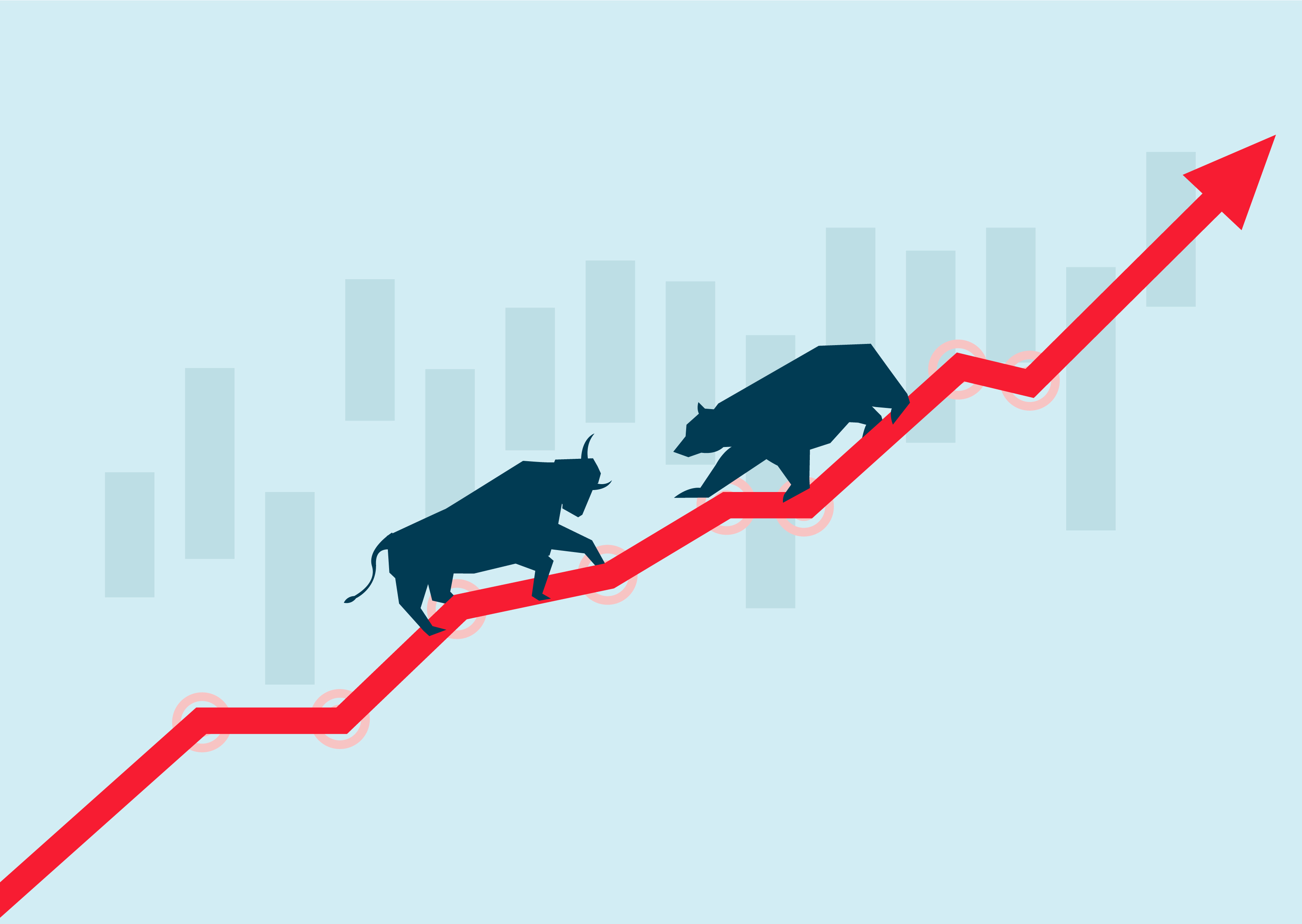Stay safe: A financial crisis could still be around the corner
Investors have been cheered by rate cuts, but Bill Bonner says don't get too excited…

As we start 2024, we turn to a pressing investment concern. Our readers must be asking the same question we are: what if we’re wrong?
We have argued that the “primary trend” in markets turned around in two moves: first, bonds topped out in July 2020; then, stocks reached their apogee at the end of the following year. We urged investors to move to MSM – “maximum safety mode” – while we awaited a crisis. Deflation was the immediate threat, not inflation. Higher interest rates would cause financing problems, we believed. Another shoe was bound to drop – a penny-loafer of a big company suddenly unable to pay its bills, a steel-toed government debt auction going “no bid”, a fast-moving crash in the stock market.
This crisis, we figured, would cause the Federal Reserve to panic: to “pivot”, lowering its key lending rate, while letting inflation rip. But what happened? So far, the bond market did as expected – with the sharpest sell-off in bond prices (and steepest increase in yields) ever seen. When the Fed began raising rates, in February 2022, its key lending rate was actually more than 5% below zero. Now, it’s more than 5% above zero in nominal terms. Adjusted for inflation, it’s about 1% or 2% positive (depending on which measure you use). The ten-year Treasury yield, on average through 2020, was under 1%. Now, it’s four times as high. Interest rates have come down recently. But they haven’t gone anywhere near the all-time lows of 2020. Inflation rates have fallen too, as expected.
MoneyWeek
Subscribe to MoneyWeek today and get your first six magazine issues absolutely FREE

Sign up to Money Morning
Don't miss the latest investment and personal finances news, market analysis, plus money-saving tips with our free twice-daily newsletter
Don't miss the latest investment and personal finances news, market analysis, plus money-saving tips with our free twice-daily newsletter
Stocks behaved more or less as we thought they would too. The market sold off in 2022. Then, after losing almost 8,000 points, in September of last year, the Dow stabilised. But then, for no apparent reason, it recovered – led by a manic performance of the Big Techs, including a bubble-like enthusiasm for AI. Then, out of the blue towards the end of last year, the Fed appeared to pivot when it halted rate rises and signalled it was planning cuts this year. No crisis. No panic. And no real reason to drop the fight against inflation – after all, core inflation is still about twice the Fed’s 2% target.
Was this then some kind of “pivot error”, or is the Fed trying to help team Biden win re-election by giving the system a little holiday cheer? We don’t know. But investors seemed to believe the good ol’ days were back again. “The long-term bull market in stocks is alive and well after the Dow hit a record high this week,” Markets Insider cheered when news of Jerome Powell’s intentions hit. Analysts expected “the long-term upside trend” to continue.
What’s going on? Is the bull market that began in August 1980 still intact, with an even higher high still ahead? Who knows? But we’d tread carefully. While stocks are up, they’re still below the highs set two years ago when measured in gold or adjusted for inflation. The lower rates of inflation we’re seeing do not mean the Fed has won its fight with rising prices. Consumer prices are still going up; just not as fast. And inflation is probably ebbing largely because the economy is slowing, not because it is getting more colour in its cheeks.
So we stand by our forecast. All we have so far is a “weak pivot”. No major crisis. No decisive swing to lower interest rates and higher inflation. Is it time to get out of cash? Time to switch out of “maximum safety mode”? Where would you go – to stocks…when they are at all-time highs? To bonds…just as the US has its biggest monthly deficit ever? No, we wouldn’t abandon safety mode. Not yet.
This article was first published in MoneyWeek's magazine. Enjoy exclusive early access to news, opinion and analysis from our team of financial experts with a MoneyWeek subscription.
Related articles
- When will interest rates fall?
- US inflation rises - will the Fed hike rates?
- Investors are still in denial about inflation and interest rates
Get the latest financial news, insights and expert analysis from our award-winning MoneyWeek team, to help you understand what really matters when it comes to your finances.
Bill Bonner is an American author of books and articles on economic and financial subjects. He is the founder of Agora Financial, as well as a co-founder of Bonner & Partners publishing.
-
 UK sets out crypto regulatory proposals
UK sets out crypto regulatory proposalsThe government has tabled legislation that sets out a regulatory framework for cryptocurrencies, while the regulator will consult on balancing innovation and consumer protections
-
 What does an interest rate cut mean for my pension?
What does an interest rate cut mean for my pension?Interest rates have been cut from 4% to 3.75%. For pension savers and retirees the effects of the drop will depend on the type of retirement pot they have, but could be significant.
-
 British blue chips offer investors reliable income and growth
British blue chips offer investors reliable income and growthOpinion Ben Russon, portfolio manager and co-head UK equities, ClearBridge Investments, highlights three British blue chips where he'd put his money
-
 Coreweave is on borrowed time
Coreweave is on borrowed timeAI infrastructure firm Coreweave is heading for trouble and is absurdly pricey, says Matthew Partridge
-
 Renewable energy funds are stuck between a ROC and a hard place
Renewable energy funds are stuck between a ROC and a hard placeRenewable energy funds were hit hard by the government’s subsidy changes, but they have only themselves to blame for their failure to build trust with investors
-
 Profit from document shredding with Restore
Profit from document shredding with RestoreRestore operates in a niche, but essential market. The business has exciting potential over the coming years, says Rupert Hargreaves
-
 The war dividend – how to invest in defence stocks as the world arms up
The war dividend – how to invest in defence stocks as the world arms upWestern governments are back on a war footing. Investors should be prepared, too, says Jamie Ward
-
 Literacy Capital: A trust where great returns fund a good cause
Literacy Capital: A trust where great returns fund a good causeThere’s plenty to like about specialist private-equity trust Literacy Capital, says Max King
-
 An AI bust could hit private credit – could it cause a financial crisis?
An AI bust could hit private credit – could it cause a financial crisis?Opinion Private credit is playing a key role in funding data centres. It may be the first to take the hit if the AI boom ends, says Cris Sholto Heaton
-
 8 of the best ski chalets for sale now
8 of the best ski chalets for sale nowThe best ski chalets on the market – from a traditional Alpine-style chalet in Switzerland to an award-winning Modernist building in Japan’s exclusive ski areas